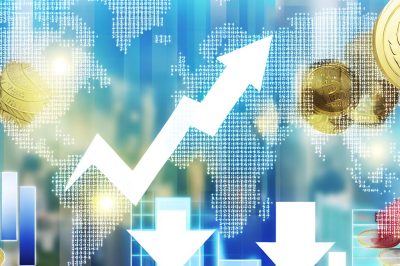Understanding Macroeconomics
Macroeconomics is a branch of economics that focuses on the behavior, structure, performance, and decision-making of an economy as a whole. Unlike microeconomics, which analyzes the actions of individuals and industries, macroeconomics examines economy-wide phenomena. This includes areas such as national income, total employment, aggregate demand and supply, and the overall growth and development of a country. For more detailed discussions and economic analyses, you might want to visit MJ Economics, where in-depth articles and resources provide valuable insights into economic trends.
Key Concepts in Macroeconomics
Gross Domestic Product (GDP): One of the primary indicators used to gauge the health of a nation’s economy, GDP represents the total dollar value of all goods and services produced over a specific time period. It serves as a comprehensive measure of a nation’s economic activity. In the context of macroeconomics, GDP is not just a statistic but a measure of a nation’s economic performance. It helps in comparing the economic productivity and income levels of different countries, offering a significant overview of economic magnitude and direction over time. Understanding GDP and its implications can aid policymakers in crafting strategies to enhance economic welfare.
Inflation: This term refers to the rate at which the general level of prices for goods and services rises, subsequently eroding purchasing power. Economists attempt to gauge inflation to monitor price stability in an economy. Inflation can affect an economy both positively and negatively. Moderate inflation is deemed healthy as it encourages spending and investing; however, high inflation can erode purchasing power and destabilize economies. Conversely, deflation—an opposite scenario leading to declining prices—can lead to decreased economic activity. Monitoring inflation is crucial for maintaining economic health, influencing decisions on interest rates and wage negotiations.
Unemployment: Economists use the unemployment rate to identify the percentage of the labor force that is jobless and actively looking for employment. It is an important indicator of an economy’s health. A higher unemployment rate signals less economic activity and can lead to social challenges, while lower unemployment denotes higher productivity. Macroeconomic policies often focus on achieving full employment, striving to reduce unemployment without igniting inflation. The dynamics of unemployment are complex, tied to factors like technological changes, global competition, and demographic shifts.
Fiscal Policy: This relates to government spending and tax policies used to influence macroeconomic conditions. Through adjustments in taxation and expenditure, governments aim to manage economic objectives such as controlling inflation, reducing unemployment, and fostering economic growth. Fiscal policy plays a decisive role in shaping an economy’s trajectory. By altering tax rates and public spending, governments can directly influence aggregate demand. During economic downturns, expansionary fiscal policy—characterized by increased government spending and tax reductions—aims to stimulate economic activity.
Monetary Policy: Conducted by a nation’s central bank, this involves management of money supply and interest rate policies to control inflation, stabilize currency, encourage employment, and promote overall economic stability. Central banks, by manipulating interest rates and influencing money supply, aim to stabilize the economy. For instance, lowering interest rates can encourage borrowing and investment, boosting economic activity, while increasing rates can help curtail inflation.
The Importance of Macroeconomics
Macroeconomics holds critical importance for policymakers, businesses, and individuals alike. National governments and central banks utilize macroeconomic analyses to devise policies that can address economic issues such as inflation, recession, or economic growth. Consequently, an understanding of macroeconomic concepts is indispensable for navigating economic shifts effectively.
For businesses, macroeconomic trends are integral in making informed decisions about investments, operations, and strategies. By analyzing macroeconomic indicators, companies can anticipate market conditions, adjust their strategies proactively, and maintain competitive advantage. On an individual level, comprehending macroeconomics aids in making informed financial decisions. From understanding how interest rates affect mortgages to recognizing the implications of unemployment trends, individuals with macroeconomic knowledge can better navigate personal financial planning.
Macroeconomic Models and Theories
Keynesian Economics: Postulated by John Maynard Keynes, this theory emphasizes total spending in the economy and its effects on output and inflation. Keynesian economics argues that active governmental policy responses are essential to moderate economic cycles. Governments, according to Keynesian theory, should step in during economic downturns with increased public spending to boost demand, hence stimulating economic recovery.
Monetarism: Centralizing on the role of governments in controlling the amount of money in circulation, monetarism suggests that variations in the money supply have major influences on national output and price levels. Monetarists advocate for a stable increase in the money supply, believing that erratic changes can lead to economic volatility.
Supply-Side Economics: This theory posits that economic growth can be most effectively fostered by investing in capital and lowering barriers on the production of goods and services. The outcome ideally leads to increased supply and economic improvement. Proponents argue that reducing taxes and regulatory burdens can boost production, leading to job creation and economic expansion.
Further Exploration
For those interested in exploring these topics further, numerous educational resources are available. Investopedia and economic research articles offer vast insights into macroeconomic principles and their real-world applications. Additionally, many academic institutions offer open-access courses that delve into macroeconomic theories, providing structured learning paths for those looking to deepen their understanding. Pursuing these resources can equip individuals with a robust comprehension of how economies function globally and within their respective nations.





